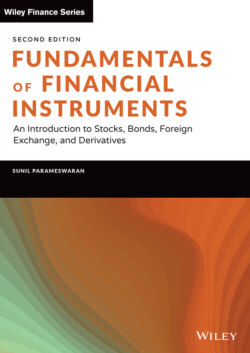Читать книгу Fundamentals of Financial Instruments - Sunil K. Parameswaran - Страница 37
На сайте Литреса книга снята с продажи.
SWAPS
ОглавлениеA swap is a contractual agreement between two parties to exchange cash flows calculated on the basis of prespecified terms at predefined points in time.
The cash flows being exchanged represent interest payments on a specified principal amount, which are computed using two different yardsticks. For instance, one interest payment may be computed using a fixed rate of interest, while the other may be based on a variable benchmark such as the T-bill rate.
A swap where both payments are denominated in the same currency is referred to as an Interest Rate Swap. The motivation for such a transaction may be understood as follows. Consider the case of a commercial bank that has entered into a fixed rate loan with one of its clients. It may now be of the opinion that interest rates are going to rise. Renegotiation of the loan may not be feasible. Even if it were, it would involve substantial legal and administrative efforts. It would be much easier for the bank concerned to enter into a swap transaction with an institution, perhaps another commercial bank, wherein it pays a fixed rate of interest and receives a variable rate based on a benchmark such as LIBOR. By doing so it would have converted its fixed rate income stream to a floating rate income stream and would stand to benefit if interest rates rise as anticipated. Thus, in a nutshell, the objective of a swap is to enable a party to dispose of a cash flow stream in exchange for another cash flow stream. Diagrammatically we can depict the above transaction as follows (Figure 1.1).
FIGURE 1.1
There also exist swaps where two parties exchange cash flows denominated in two different currencies. Such swaps are referred to as Currency Swaps.
